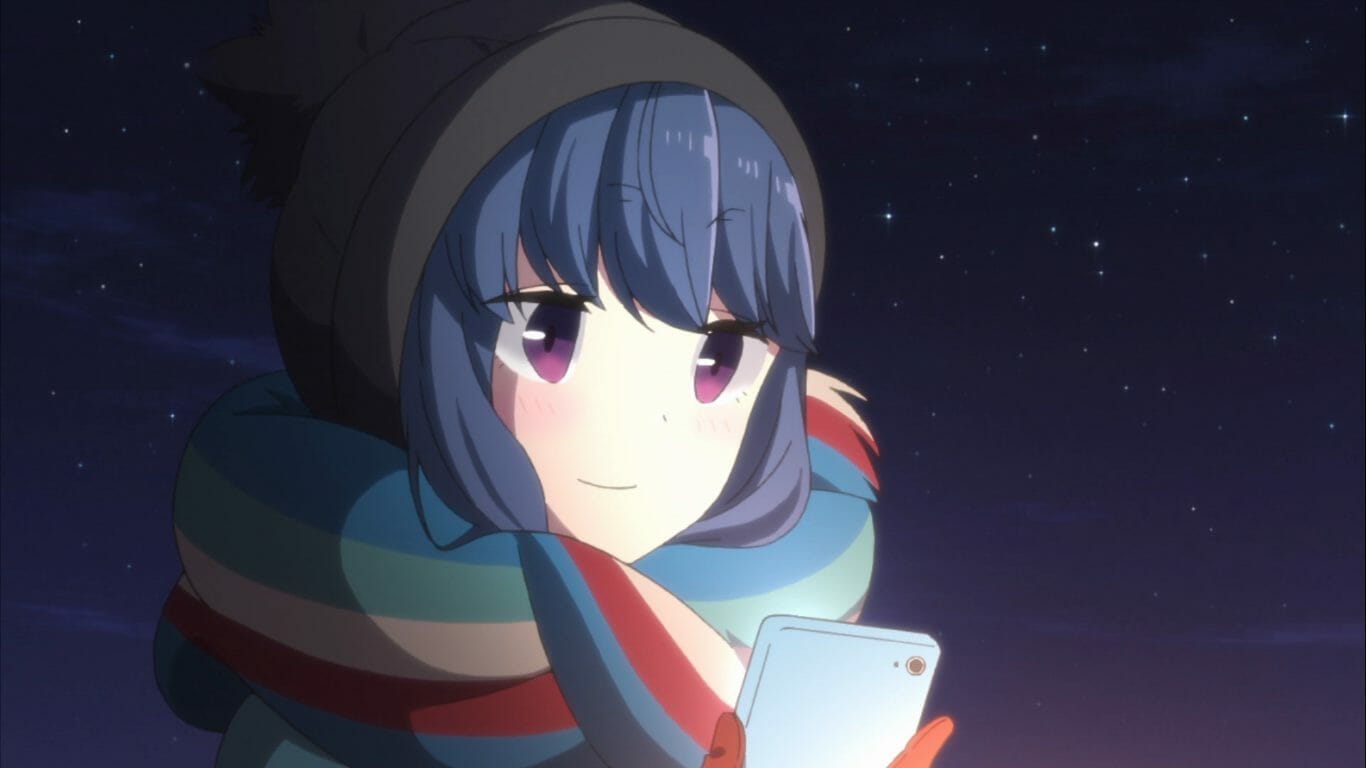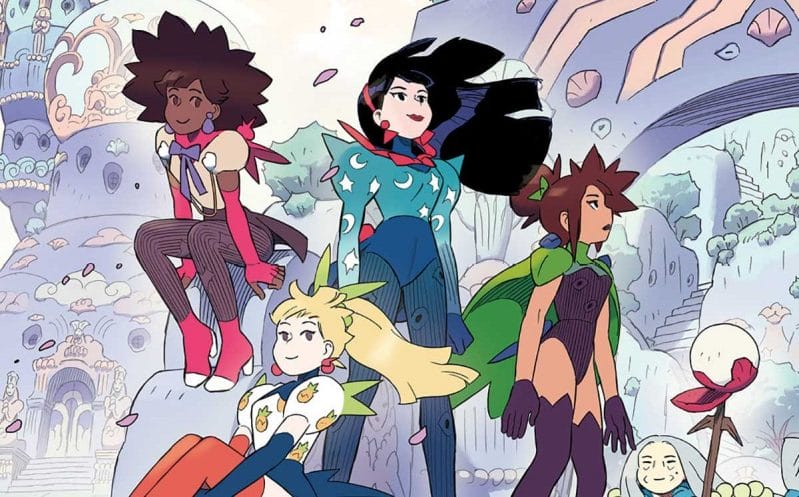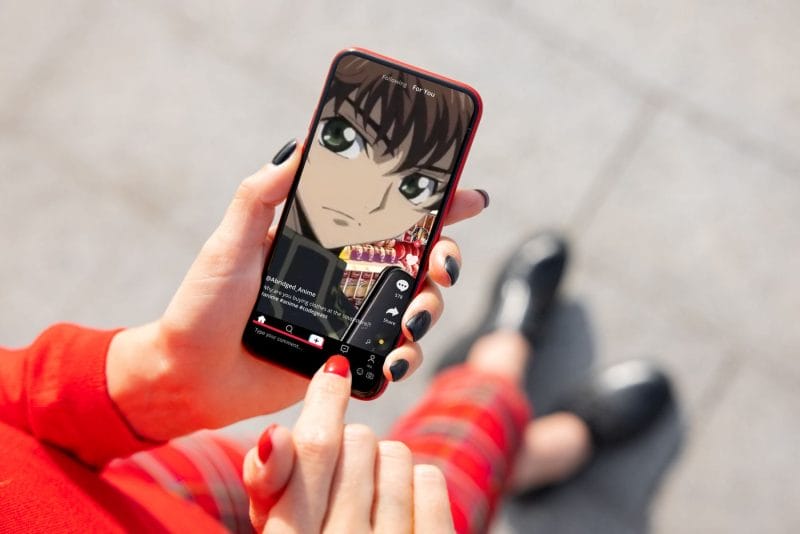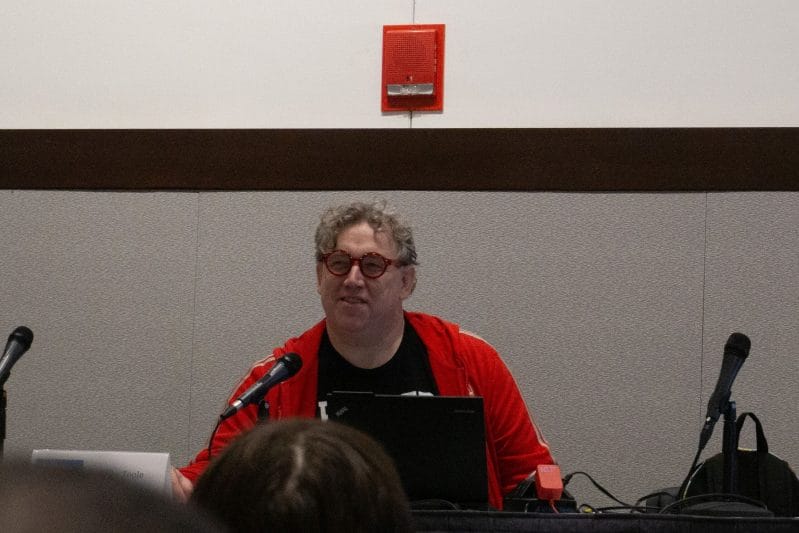In Winter 2021, Laid-Back Camp’s cast of teenaged camping enthusiasts returned to our screens and to the lush scenery around Mount Fuji. Rin, Nadeshiko, and the rest of their friends set out for a second season of outdoor activities, with all the essentials in tow: tents, tarps, portable stoves, woolly blankets, cup noodles, and… smartphones?
In a show so in love with the great outdoors, the frequent presence of cell phones may seem like an oxymoron. After all, Nature and Technology are often presented as an incompatible dichotomy. So much of the language around camping, hiking, and holidaying in general—in advertisements, pop culture, and conversations where your parents worry that you’re working too hard—emphasize the idea of “switching off” or “disconnecting.” Yet phones are never far away in Laid-Back Camp—in fact, they’re integral to the story and to the growth of relationships between the characters.
Not only does Laid-Back Camp’s use of smartphones reflect how contemporary teenagers communicate, navigate, and record their memories, but it presents an alternative to the perceived Nature versus Tech split: one where Tech can enhance our experience of Nature and can bring people together even when they are physically alone.
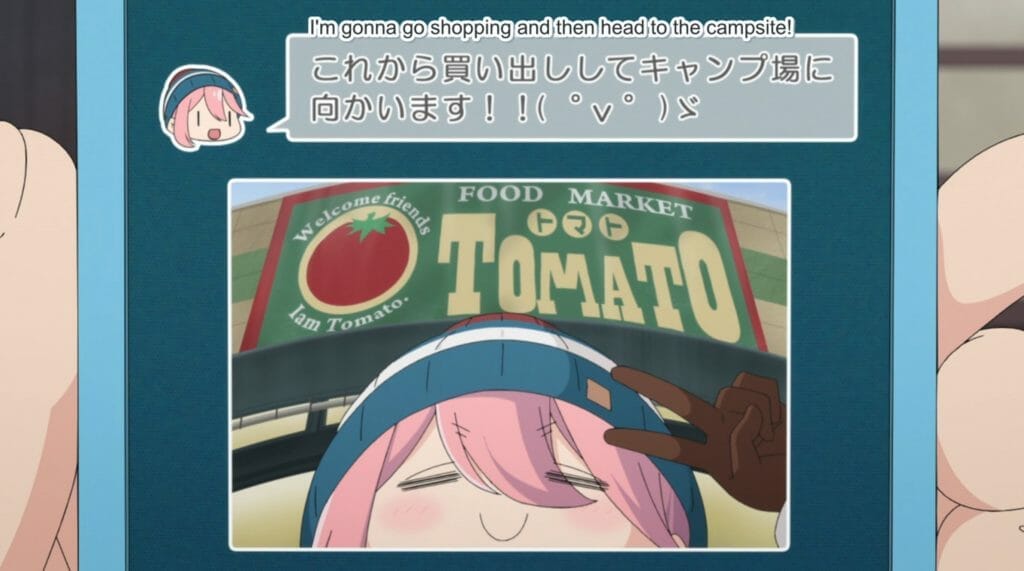
The main way that smartphone tech factors into the story is through the characters instant messaging, both individually and in the context of a group chat, with the relevant speech bubbles and emojis popping up in-frame. This serves multiple functions. Firstly, it’s a fun format for exposition, as characters use the chat to fill each other in on news or camping plans. The IMs often take the place of internal monologue or narration, delivering information to the viewer in a context that feels like a real conversation.
It’s also often cleverly used as a way to stage dialogues between characters who are physically far apart, meaning group scenes are possible without having to write all the characters into the same location. This allows for some freedom of movement: instead of having to situate the cast in the same club room for every group scene, the campers can be working at their part-time jobs, hanging out at home with their pets, or even adventuring on their own camping trip, while still having a conversation. It shows the characters multitasking and functioning in different aspects of their lives, and, purely from a visual standpoint, it gives the audience a variety of (often scenic) backdrops to enjoy while the dialogue rolls along.
The main function of messaging in Laid-Back Camp, though, is to build relationships. From its earliest episodes, one of the most charming things about the show has been that the narrative never belittles Rin for her introversion or her choice to travel alone. She enjoys her solo hobby, but she is by no means antisocial. In fact, she happily communicates with her friends and invites them to share her beautiful views and her exciting experiences by sending them photos and text updates. At first, this sharing is reserved for her best friend Ena, but text chatting becomes a key avenue for her growing friendship with Nadeshiko.
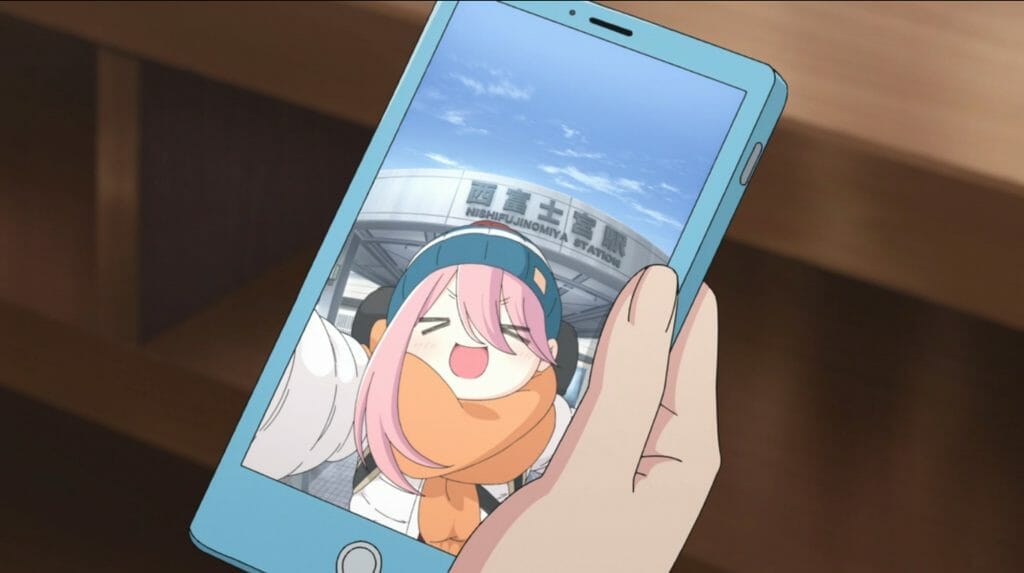
The two have some significant bonding moments when they go camping together, but they have just as many when they are physically apart, albeit connected by their phones. In season one, Rin and Nadeshiko set off on separate camping trips, but send each other pictures of their night-sky view—reminding each other that they’re under the same stars, and in a way sharing the trip. Later, Nadeshiko has to pull out of a trip because she gets sick, but, undeterred, she tags along virtually. She looks up local guides online and, via instant message, takes Rin on a tour of the area she’s in. Rin, in turn, sends photos and videos. They experience it together, even though they’re apart, all thanks to the Internet and their smart devices.
This theme of being connected while being alone only deepens in season two. In the third episode, Rin muses that “I think solo camping is a way to appreciate loneliness.” This inspires Nadeshiko to try solo camping herself—all the while, of course, keeping in touch with Rin and the others by sending photos and updates. While helping her prepare, Rin emphasizes the importance of technology to modern camping, advising her to navigate by a Maps app, check online reviews for insights about where she’s going, and always check the weather forecast in real-time. Nadeshiko’s family also links a “find me” app so they will be able to track her location in an emergency, assuaging their worries about her getting lost. Nadeshiko is able to stride out into the mountains with a sense of confidence and independence she could not have had without her smartphone in hand.
Far from being a hindrance to the wilderness experience, technology in Laid-Back Camp is only ever a force for good. In fact, it’s a failure to use technology that inevitably lands the other members of the outdoors club in trouble, leaving them stranded in the cold after forgetting to check the forecast and letting their phone batteries die. Lucky for them, Rin is able to rescue the group remotely, checking the weather in their area and calling the club supervisor for help. Phones never cause problems or drive people apart. Rather, they solve problems and bring people together.
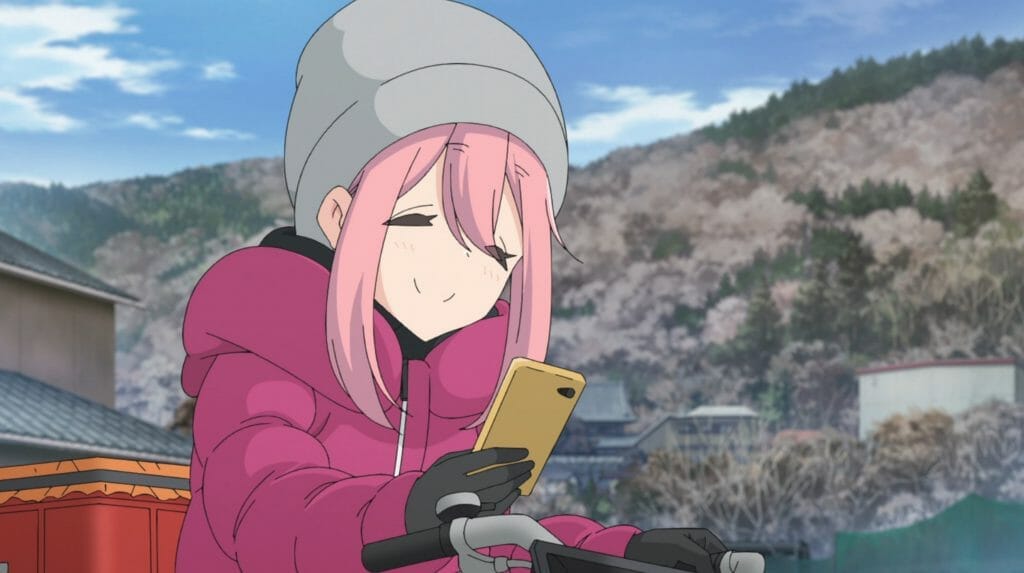
Instead of defaulting to the common stereotype of “These darn kids are always looking at their phones instead of enjoying the natural beauty around them, always texting instead of having real conversations!” Laid-Back Camp explores how we might use those very phones to enjoy natural beauty, and how we might have significant conversations through text. The relationships between the characters are the heart and soul of this show and the key to its emotional hook. The fact that these relationships are built and sustained through sharing photos and instant messaging provides a refreshing, positive twist on the narrative that technology makes people shut-off and impersonal.
As well as being a clever and fun storytelling device, Laid-Back Camp’s integration of texts and group chats into its narrative reflects the positive role that tech can play in our lives. It could be said that sending goofy selfies, pictures of our lunches and the view out our windows, and emojis, is a modern love language… or, at the very least, a core tenet of so many modern relationships. The camping girls demonstrate how texting can be a form of intimacy, sharing scenery photos to bring someone else into a private moment, or using pictures of the same sunrise to build a sense of camaraderie.
Laid-Back Camp is, by design, a comforting show, from its meticulously-crafted sensory details to its slow pace to its lush inviting scenery. In 2021, a year-or-so into pandemic conditions and social distancing recommendations, it offers an unexpectedly perfect piece of reassurance: it reminds us that we can be together, even when we are alone.
Yes, being constantly connected can have its downfalls. But tech can also bring us to places we’ve never been. It can be a welcoming window into our lives that we can open for other people, and it can be a real lifeline knowing that you’re in your own space but everyone you love is just a few taps of a touchscreen away. Laid-Back Camp gets so many little things right about the slow growth of friendships and the warm glow you feel from sharing your hobbies, and the way its characters bond together digitally is just one more aspect of the series that continues to resonate.


